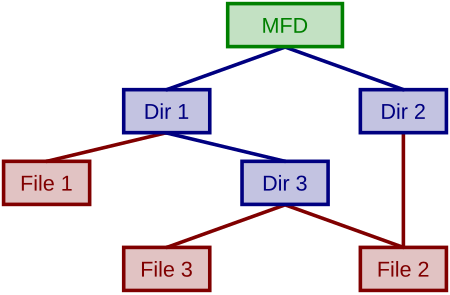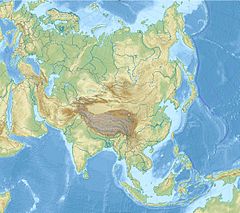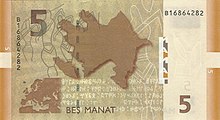Old Turkic script
| ||||||||||||||||||||||||||||||||||||||||||||||||||||||||||||||||||||||||||||||||||||||||||||||||||||||||||||||||||||||||||||||||||||||||||||||||||||||||||||||||||||||||||||||||||||||||||||||||||||||||||||||||||||||
Read other articles:

Disused railway in England Not to be confused with West Lancashire Light Railway. West Lancashire RailwayOverviewLocaleLancashireMerseysideTerminiSouthport railway stationPreston railway stationTechnicalTrack gauge1,435 mm (4 ft 8+1⁄2 in) standard gauge Route map Legend London and North Western Railwayto Lancaster Preston from 1900 Preston Fishergate Hill until 1900 River Ribble East Lancashire Railwayto Blackburn London and North Western …

Сибирский горный козёл Научная классификация Домен:ЭукариотыЦарство:ЖивотныеПодцарство:ЭуметазоиБез ранга:Двусторонне-симметричныеБез ранга:ВторичноротыеТип:ХордовыеПодтип:ПозвоночныеИнфратип:ЧелюстноротыеНадкласс:ЧетвероногиеКлада:АмниотыКлада:СинапсидыКласс:…

Cybercrime organization Lazarus Group라자루스 조직Formationc. 2009[1]TypeAdvanced persistent threatPurposeCyberespionage, cyberwarfareRegion Potonggang District, Pyongyang, North KoreaMethodsZero-days, spearphishing, malware, disinformation, backdoors, droppersOfficial language KoreanParent organizationReconnaissance General BureauKorea Computer CenterNonserviam Cyber Warfare CommandAffiliationsBureau 121, Unit 180, AndArielFormerly calledAPT38Gods ApostlesGods DisciplesGuardians of PeaceZ…

This article needs additional citations for verification. Please help improve this article by adding citations to reliable sources. Unsourced material may be challenged and removed.Find sources: Diego de Rosales – news · newspapers · books · scholar · JSTOR (November 2017) (Learn how and when to remove this message) Diego de RosalesHistoria General del Reino de ChileBorn1601Madrid, SpainDied1677 (aged 75–76)Santiago, ChileNationalitySpanishOccu…

Izhora PlateauRussian: Ижорская возвышенностьHighest point - Voronya mountain [ru]Highest pointElevation176 m (577 ft)DimensionsArea24.7 km2 (9.5 sq mi)GeographyIzhora PlateauShow map of Leningrad OblastIzhora PlateauShow map of European Russia CountryRussiaFederal subjectLeningrad OblastRange coordinates59°30′0″N 29°35′0″E / 59.50000°N 29.58333°E / 59.50000; 29.58333 The Izhora Plateau (Russian: …

Voce principale: AC Pisa 1909. Pisa CalcioStagione 1999-2000Sport calcio Squadra Pisa Allenatore Francesco D'Arrigo Presidente Enrico Gerbi Serie C12º Coppa Italia Serie CVincitore Maggiori presenzeCampionato: Andreotti (32) Miglior marcatoreCampionato: Savoldi (11) StadioArena Garibaldi 1998-1999 2000-2001 Si invita a seguire il modello di voce Questa pagina raccoglie i dati riguardanti il Pisa Calcio nelle competizioni ufficiali della stagione 1999-2000. Indice 1 Stagione 2 Rosa 3 Risult…

Panorama sur la plaine de la Vaunage La Vaunage est un espace géographique situé entre les villes de Sommières et de Nîmes, dans le département du Gard et dans la région Languedoc-Roussillon. Il est constitué d'une plaine principale, autour de laquelle s'articulent de nombreuses collines. Strictement, ses neuf communes sont d'est en ouest : Caveirac, Clarensac, Langlade, Saint-Dionisy, Nages-et-Solorgues, Calvisson (dont dépendent les hameaux de Sinsans et de Bizac), Boissières, Sa…

Finnish politician Juho Koivisto in 1941 Juho Koivisto's gravestone in Kurikka cemetery, Finland Johannes (Juho) Koivisto (15 March 1885, in Kurikka – 13 October 1975; original surname Keski-Koivisto) was a Finnish farmer and politician. He served as Deputy Minister of Agriculture from 4 July 1930 to 21 March 1931 and from 12 March 1937 to 4 January 1941 and as Deputy Minister of Finance from 4 January 1941 to 5 March 1943. He was a member of the Parliament of Finland from 1927 to 1951, repres…

Pour les articles homonymes, voir FS et SGF. Si ce bandeau n'est plus pertinent, retirez-le. Cliquez ici pour en savoir plus. Cet article ne cite pas suffisamment ses sources (juin 2017). Si vous disposez d'ouvrages ou d'articles de référence ou si vous connaissez des sites web de qualité traitant du thème abordé ici, merci de compléter l'article en donnant les références utiles à sa vérifiabilité et en les liant à la section « Notes et références ». En pratique : …

City in California, United States City in California, United StatesArtesia, CaliforniaCityPioneer Boulevard in Artesia, California FlagSealLocation of Artesia in Los Angeles County, California.ArtesiaLocation in CaliforniaShow map of CaliforniaArtesiaArtesia (the United States)Show map of the United StatesArtesiaArtesia (North America)Show map of North AmericaCoordinates: 33°52′2″N 118°4′50″W / 33.86722°N 118.08056°W / 33.86722; -118.08056Country United S…

莎拉·阿什頓-西里洛2023年8月,阿什頓-西里洛穿著軍服出生 (1977-07-09) 1977年7月9日(46歲) 美國佛羅里達州国籍 美國别名莎拉·阿什頓(Sarah Ashton)莎拉·西里洛(Sarah Cirillo)金髮女郎(Blonde)职业記者、活動家、政治活動家和候選人、軍醫活跃时期2020年—雇主內華達州共和黨候選人(2020年)《Political.tips》(2020年—)《LGBTQ國度》(2022年3月—2022年10月)烏克蘭媒體�…

Australian rules football club Chelsea HeightsNamesFull nameChelsea Heights Football Netball ClubNickname(s)Demons, HeightersClub detailsFounded1969; 55 years ago (1969)Colours CompetitionSouthern Football Netball LeaguePresidentKellie PerymanCoachJosh BullCaptain(s)Jessie O'DellPremierships(4): 1995, 2000, 2017, 2022Ground(s)Beazley ReserveUniforms Home Other informationOfficial websitechelseaheightsfnc.com.au The Chelsea Heights Football Netball Club is an Austral…

「アプリケーション」はこの項目へ転送されています。英語の意味については「wikt:応用」、「wikt:application」をご覧ください。 この記事には複数の問題があります。改善やノートページでの議論にご協力ください。 出典がまったく示されていないか不十分です。内容に関する文献や情報源が必要です。(2018年4月) 古い情報を更新する必要があります。(2021年3月)出典�…

У Вікіпедії є статті про інші значення цього терміна: Дніпропетровськ (значення). U134 «Дніпропетровськ» Фрегат «Дніпропетровськ» після списання Історія →Радянський Союз→Росія Назва: «Беззавєтний», (рос. «Беззаветный»)Власник: ВМФ СРСР→ВМФ РосіїБудівник: СБЗ «Залив», �…

Unit of volume with different values Copper gill-measuring jugs The gill /ˈdʒɪl/ or teacup is a unit of measurement for volume equal to a quarter of a pint. It is no longer in common use, except in regard to the volume of alcoholic spirits measures. Imperial In imperial units 1 imperial gill ≡ 5 imperial fluid ounces ≡ 1⁄32 imperial gallon ≡ 1⁄4 imperial pint ≡ 1⁄2 Imperial cups = 40 Imperial fluid drams ≡ 142.0653125 mL[a] ≈ 142 mL ≈ 1.2 …

This article has multiple issues. Please help improve it or discuss these issues on the talk page. (Learn how and when to remove these template messages) This article's use of external links may not follow Wikipedia's policies or guidelines. Please improve this article by removing excessive or inappropriate external links, and converting useful links where appropriate into footnote references. (December 2021) (Learn how and when to remove this message) This article does not cite any sources. Ple…

Armada India Timur Repulse (1820) di India Timur Dock Basin. Armada India Timur (Bahasa Inggris: East Indiaman) adalah nama umum untuk semua kapal layar yang disewa atau berlisensi perusahaan-perusahaan dagang dari negara-negara Eropa yang beroperasi di Hindia Timur selama abad ke-17 sampai 19. Istilah ini digunakan untuk merujuk kepada kapal-kapal yang dimiliki oleh perusahaan-perusahaan dagang Hindia Timur dari Denmark, Belanda (Oostindiëvaarder), Inggris, Prancis, Portugis, atau Swedia (osti…

1997 video gameSid Meier's Gettysburg!Developer(s)Firaxis GamesPublisher(s)Electronic ArtsDesigner(s)Sid MeierComposer(s)David EvansPlatform(s)Microsoft WindowsReleaseNA: October 14, 1997[1]Genre(s)Real-time wargameMode(s)Single-player, multiplayer Sid Meier's Gettysburg! is a 1997 real-time wargame developed by Firaxis Games and published by Electronic Arts. It was designed by Sid Meier, and followed by Sid Meier's Antietam! in 1999. Gameplay A battle scene The game allows the player to…

Демократична Республіка Афганістан / Республіка Афганістан 1978–1992 Прапор Герб Афганістан: історичні кордони на карті Столиця Кабул Мови Пушту (1978–1980)Пушту & Дарі (1980–1992) Релігії Атеїзм (1978–1987)Іслам (1987–1992) Форма правління ісламська–соціалістична однопартійна держава …

GabonFIBA zoneFIBA AfricaWorld ChampionshipsAppearancesNoneAfrican ChampionshipsAppearances5MedalsNone The Gabon national under-18 basketball team is a national basketball team of Gabon, administered by the Fédération Gabonaise de Basket-Ball.[1] It represents the country in international under-18 (under age 18) basketball competitions. See also Gabon men's national basketball team Gabon men's national under-16 basketball team References ^ Profile - Gabon, FIBA.com, Retrieved 2 Aug 201…





